Top 20 Vegetables High in Potassium
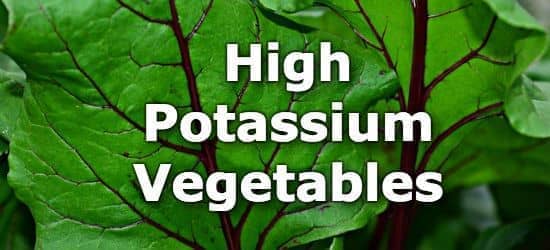
Potassium is an essential nutrient used to maintain fluid and electrolyte balance in the body.
A deficiency in potassium causes fatigue, irritability, and hypertension (increased blood pressure).
Overdose of potassium from natural sources is nearly impossible, however, it is possible to consume too much potassium via potassium salts which can lead to nausea, vomiting, and even cardiac arrest.
For those with chronic kidney disease (CKD) who need to lower their potassium, this list can serve as a guide on what vegetables to eat or avoid depending on your own restrictions. Most people with CKD should not consume more than 200mg of potassium per serving, or 2000mg per day. This article can only be used as a guide, but the amount of potassium you eat each day should be set by your care provider. See also our list of low potassium vegetables for more ideas.
Vegetables high in potassium include beet greens, lima beans, Swiss chard, potatoes, acorn squash, spinach, bok choy, mushrooms, tomatoes, and, sweet potatoes. The current daily value (DV) for potassium is 4700mg, recently increased from 3500mg by the FDA.
Below is a list of vegetables high in potassium, for more, see the articles on high potassium foods, and high potassium fruits.
You can also use the nutrient ranking tool to see the full list of 200 vegetables high in potassium, and sort by highest or lowest.
-
 1. Beet Greens (Cooked)
1. Beet Greens (Cooked)
Potassium
per Cup CookedPotassium
per 100gPotassium
per 200 Calories1309mg
(28% DV)909mg
(19% DV)6733mg
(143% DV) -
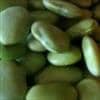 2. Lima Beans (Cooked)
2. Lima Beans (Cooked)
Potassium
per Cup CookedPotassium
per 100gPotassium
per 200 Calories969mg
(21% DV)570mg
(12% DV)927mg
(20% DV) -
 3. Swiss Chard (Cooked)
3. Swiss Chard (Cooked)
Potassium
per Cup CookedPotassium
per 100gPotassium
per 200 Calories961mg
(20% DV)549mg
(12% DV)5490mg
(117% DV) -
 4. Baked Potatoes (With Skin)
4. Baked Potatoes (With Skin)
Potassium
in a Medium PotatoPotassium
per 100gPotassium
per 200 Calories926mg
(20% DV)535mg
(11% DV)1151mg
(24% DV)A 173 gram baked potato without skin provides 676mg (14% DV of potassium). See the complete nutrition comparison of baked potatoes with skin vs no skin.
-
 5. Baked Acorn Squash
5. Baked Acorn Squash
Potassium
per Cup CookedPotassium
per 100gPotassium
per 200 Calories896mg
(19% DV)437mg
(9% DV)1561mg
(33% DV)- 19% DV per cup of baked acorn squash (cubed)
- 12% DV per cup of mashed pumpkin
- 12% DV per cup of boiled butternut squash (cubed)
The average cooked winter squash contains 11% DV of potassium per cup cooked
-
 6. Spinach (Cooked)
6. Spinach (Cooked)
Potassium
per Cup CookedPotassium
per 100gPotassium
per 200 Calories839mg
(18% DV)466mg
(10% DV)4052mg
(86% DV) -
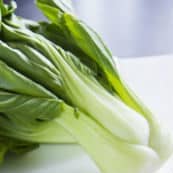 7. Pak-Choi (Bok Choy) (Cooked)
7. Pak-Choi (Bok Choy) (Cooked)
Potassium
per Cup CookedPotassium
per 100gPotassium
per 200 Calories631mg
(13% DV)371mg
(8% DV)6183mg
(132% DV) -
 8. White Button Mushrooms (Cooked)
8. White Button Mushrooms (Cooked)
Potassium
per Cup CookedPotassium
per 100gPotassium
per 200 Calories555mg
(12% DV)356mg
(8% DV)2543mg
(54% DV)Other Mushrooms High in Potassium
- 8% DV per cup of cremini mushrooms
- 7% DV per cup of portobello mushrooms
- 6% DV per cup of chantarelle mushrooms
- 6% DV per cup of morel mushrooms
- 4% DV per cup of shiitake mushrooms
-
 9. Sweet Potatoes (Mashed)
9. Sweet Potatoes (Mashed)
Potassium
per Cup MashedPotassium
per 100gPotassium
per 200 Calories536mg
(11% DV)210mg
(4% DV)416mg
(9% DV) -
 10. Tomato (Cooked)
10. Tomato (Cooked)
Potassium
per Cup CookedPotassium
per 100gPotassium
per 200 Calories523mg
(11% DV)218mg
(5% DV)2422mg
(52% DV) -
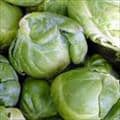 11. Brussels Sprouts (Cooked)
11. Brussels Sprouts (Cooked)
Potassium
per Cup CookedPotassium
per 100gPotassium
per 200 Calories495mg
(11% DV)317mg
(7% DV)1761mg
(37% DV) -
 12. Zucchini (Cooked)
12. Zucchini (Cooked)
Potassium
per Cup CookedPotassium
per 100gPotassium
per 200 Calories475mg
(10% DV)264mg
(6% DV)3520mg
(75% DV) -
 13. Broccoli (Cooked)
13. Broccoli (Cooked)
Potassium
per Cup CookedPotassium
per 100gPotassium
per 200 Calories457mg
(10% DV)293mg
(6% DV)1674mg
(36% DV) -
 14. Artichokes (Cooked)
14. Artichokes (Cooked)
Potassium
per Cup CookedPotassium
per 100gPotassium
per 200 Calories444mg
(9% DV)264mg
(6% DV)1173mg
(25% DV) -
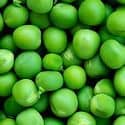 15. Green Peas (Cooked)
15. Green Peas (Cooked)
Potassium
per Cup CookedPotassium
per 100gPotassium
per 200 Calories434mg
(9% DV)271mg
(6% DV)645mg
(14% DV) -
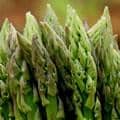 16. Asparagus (Cooked)
16. Asparagus (Cooked)
Potassium
per Cup CookedPotassium
per 100gPotassium
per 200 Calories403mg
(9% DV)224mg
(5% DV)2036mg
(43% DV) -
 17. Sweet Corn (Cooked)
17. Sweet Corn (Cooked)
Potassium
per Cup CookedPotassium
per 100gPotassium
per 200 Calories392mg
(8% DV)270mg
(6% DV)628mg
(13% DV) -
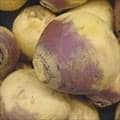 18. Rutabagas (Swedes, Neeps) (Cooked)
18. Rutabagas (Swedes, Neeps) (Cooked)
Potassium
per Cup CookedPotassium
per 100gPotassium
per 200 Calories367mg
(8% DV)216mg
(5% DV)1440mg
(31% DV) -
 19. Fennel (Cooked)
19. Fennel (Cooked)
Potassium
per CupPotassium
per 100gPotassium
per 200 Calories360mg
(8% DV)414mg
(9% DV)2671mg
(57% DV) -
 20. Summer Squash (Cooked)
20. Summer Squash (Cooked)
Potassium
per Cup CookedPotassium
per 100gPotassium
per 200 Calories346mg
(7% DV)192mg
(4% DV)1920mg
(41% DV)
Less Common Potassium Rich Vegetables
| Food | Serving | Potassium |
|---|---|---|
| 1. Yams | per cup | 26% DV (1224mg) |
| 2. Yautia | per cup | 17% DV (807mg) |
| 3. Bamboo Shoots | per cup cooked | 14% DV (640mg) |
| 4. Taro | per cup cooked | 14% DV (639mg) |
| 5. Kohlrabi | per cup cooked | 12% DV (561mg) |
| 6. Mustard Spinach | per cup cooked | 11% DV (513mg) |
| 7. Jute Potherb (Molokhiya) | per cup cooked | 10% DV (479mg) |
| 8. Celeriac | per cup | 10% DV (468mg) |
| 9. Pea Sprouts | per cup | 10% DV (457mg) |
| 10. Bittermelon | per cup cooked | 8% DV (396mg) |
How much potassium do you need each day?
The daily value (%DV) for Potassium is 4700mg and is a general target intended for most people. Adquate intakes (%AI) take age and gender into account and range from 2000mg - 3400mg for most people.
| Life Stage | AI | Infants |
|---|---|
| 0-6 months old | 400mg |
| 7-12 months old | 860mg |
| Children | |
| 1-3 years old | 2000mg |
| 4-8 years old | 2300mg |
| Males | |
| 9-13 years old | 2500mg |
| 14-18 years old | 3000mg |
| 19+ years old | 3400mg |
| Females | |
| 9-13 years old | 2300mg |
| 14-18 years old | 2300mg |
| 19+ years old | 2600mg |
| Pregnancy | |
| 14-18 years old | 2600mg |
| 19+ years old | 2900mg |
| Lactation | |
| 14-18 years old | 2500mg |
| 19-30 years old | 2800mg |
About the Data
Data for the curated food lists comes from the USDA Food Data Central Repository.
You can check our data against the USDA by clicking the (Source) link at the bottom of each food listing.
Note: When checking data please be sure the serving sizes are the same. In the rare case you find any difference, please contact us and we will fix it right away.
About Nutrient Targets
Setting targets can provide a guide to healthy eating.
Some of the most popular targets include:- Daily Value (%DV) - The daily value (%DV) is a general guideline for consumption that will prevent deficiency of a particular nutrient in most people. The %DV refers to the percentage of an amount that\'s found in a single serving of a food. It also accounts for absorption factors. It is set by the U.S. FDA.
- Recommended Dietary Allowance (%RDA) - The RDA sets an average daily dietary intake level that is sufficient to meet the nutrient requirements of nearly all (97.5%) healthy individuals. It\'s more specific than the daily value, and varies by age and gender. The RDA is set by the US National Institutes of Health.
- Reference Dietary Intake (%RDI) -The reference dietary intake is similar to the recommended daily allowance, but is specific to age and gender. The RDI for amino acids is set by the U.N. World Health Organization.
- Adequate Intake (%AI) - This value is primarily used in reference to omega-3 and omega-6 fats. The Adequate Intake is set by the U.S. Institute of Medicine. Because there is less evidence to determine the ideal targets for consumption of these nutrients, the specific amount is considered to be less reliable. Using the term Adequate Intake, rather than one of the other terms, helps to emphasize that the ideal intake of that particular nutrient has not yet been scientifically determined.
See the Guide to Recommended Daily Intakes for more information.
Want to set your own targets? Sign up for an account and set custom targets in the daily food log.From the Nutrient Ranking Tool
Use the ranking tool links below to select foods and create your own food list to share or print.
- Foods High in Potassium
- Foods Low in Potassium
- Vegetables High in Potassium
- Fruits High in Potassium
- Vegetarian Foods High in Potassium
- Nuts High in Potassium
- Grains High in Potassium
- Beans High in Potassium
- Dairy High in Potassium
- Breakfast Cereals High in Potassium
- Fast Foods High in Potassium
View more nutrients with the nutrient ranking tool, or see ratios with the nutrient ratio tool.
Related
Data Sources and References
Try the recipe nutrition calculator, or daily meal planner.
Create a free account to log and track foods.

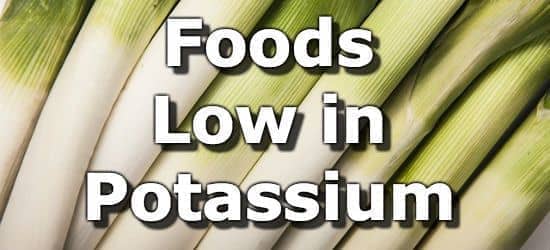 Next ➞
Next ➞